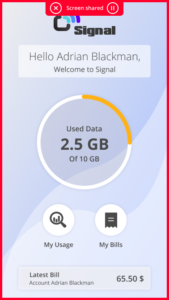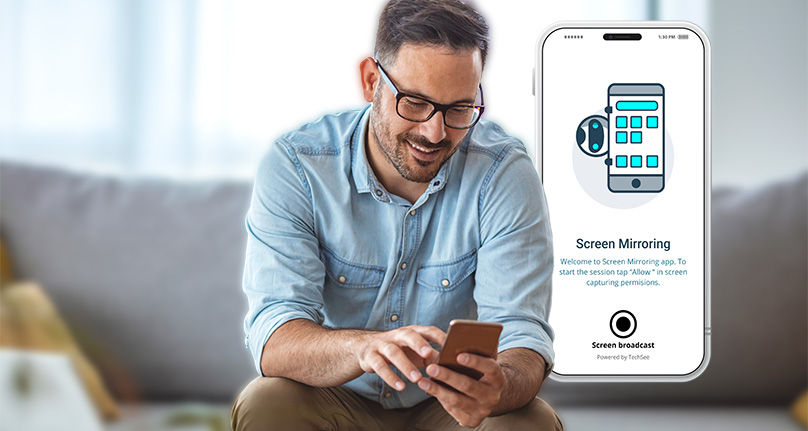Contents
Whether you are a ridesharing leader supporting millions of global drivers and riders or a mobile carrier troubleshooting connectivity issues, fast and convenient mobile support is mission-critical. However, providing customer support for issues that occur on smartphones is very challenging. In this post, we will explore the challenges of mobile software support, and how mobile mirroring is bringing visual clarity to support agents and end-users alike, delivering faster, more efficient, and effective customer service.
The Smartphone Service Challenge
Smartphones are incredibly capable. Businesses and consumers alike rely on them to connect, engage and stay productive. Service downtown, whether from a mobile carrier or a customer challenge with a mobile app, can quickly frustrate customers. This makes helping customers on smartphones critical to business success. However, providing virtual remote support for issues that occur on a smartphone can be very challenging.
Below are a handful of the most common challenges.
User Privacy
As a highly personal communications channel, service providers must respect the user’s privacy when requesting device or account information.
Product Knowledge
Accessing and changing smartphone information often requires entering settings and screens unfamiliar to the end user.
Communication Channels
Communications with mobile support teams often occur over chat or email. Email is notoriously slow. Even within a live chat environment, it can be very hard to guide users using text alone.
User Experience
Furthermore, if the user is chatting or talking with support on the smartphone on which they need support, they must constantly switch between the chat window, and the application or settings screen in question. This creates a terribly confusing user experience.
Fragmented Smartphone Market
Helping users navigate to the right phone settings is very challenging given the fragmented smartphone market. Phone settings screens and menus are different across manufacturers and change as device firmware is updated.
These are just a few of the challenges that make smartphones, mobile networks and mobile apps frustrating for end users and support agents alike.
Mobile Screen Mirroring: The Key to Virtual Smartphone Support

This seemingly simple technology resolves or minimizes all of the above challenges. Customers can simply show live remote agents their issues, without needing to share error logs, wait for email responses or navigate back and forth between applications. Similarly, agents can guide end users based on their actual phone screens and settings, ensuring full resolution before they end the call.
Deploying Mobile Mirroring: Understanding Your Options
Mobile mirroring comes in two forms: (1) a light standalone app that allows customers to easily start sharing, and (2) a light SDK (software development kit) that can be easily integrated into any mobile app. Organizations testing mobile mirroring often start with the standalone app option, while teams with a high volume of mobile smartphone support demand are best served with fully integrated mobile mirroring.
Regardless of the deployment option, agents can initiate and manage mobile mirroring as another tool in their TechSee dashboard, alongside live video calling, screen sharing, AR guidance, and more.
The Practical Impact of Mobile Screen Mirroring
Like all support innovations, mobile mirroring is designed to improve both support productivity and effectiveness, thereby improving customer satisfaction and retention. The visual clarity of mobile mirroring typically improves AHT, FCR, CSAT, and even product refunds and returns rates.
Consider the following sample scenarios and the impact of mobile mirroring.
Scenario 1
You are traveling abroad, and your carrier’s international roaming doesn’t work. The customer finds a friendly WiFi network and contacts the carrier’s online support team. They are asked to navigate and change unfamiliar settings deep in the smartphone operating system, but cannot find it. They send support an email, but it takes days (hours, at best) before the remote support team even understands their issue.
With mobile mirroring, the remote customer on the friendly WiFi network can simply share their screen, follow the agent’s visual guidance, and help the customer change the required settings in moments.
Scenario 2
You just bought this amazing new smartphone, but are struggling to transfer all your information. You aren’t sure whether you are doing everything right, and know that replacing all your accounts, passwords, contact information, and even family pictures is going to be near impossible.
With mobile mirroring, a remote expert can visually check that all information has been successfully transferred, or guide the customer to complete the transfer process.
Scenario 3
You just launched or upgraded your mobile app, a critical part of your business. However, users are confused by the unfamiliar environment.
Mobile mirroring allows your team to easily understand the user’s questions or issues, and help them navigate your new app.
Scenario 4
You are trying to connect your new robotic vacuum or smart thermostat to your smartphone, but cannot get them to sync.
Mobile mirroring allows the support agent to help you log in, set up the device connection, and even show you some useful tricks to get the most out of your new purchase.
Scenario 5
A small business or taxi driver is having issues connecting to their mobile payments app – causing substantial disruption to their business and your revenue stream.
Mobile mirroring allows experienced support agents to quickly and effectively troubleshoot and resolve most connectivity and login issues in a single call.
Getting Started with Mobile Screen Mirroring
To learn more about how you can get started with or improve your mobile support performance, including mobile mirroring, please contact your TechSee Sales Representative today. Not yet a TechSee customer? Just fill out this short form, and one of our solutions consultants will be in touch with you shortly.
We look forward to speaking with you.







